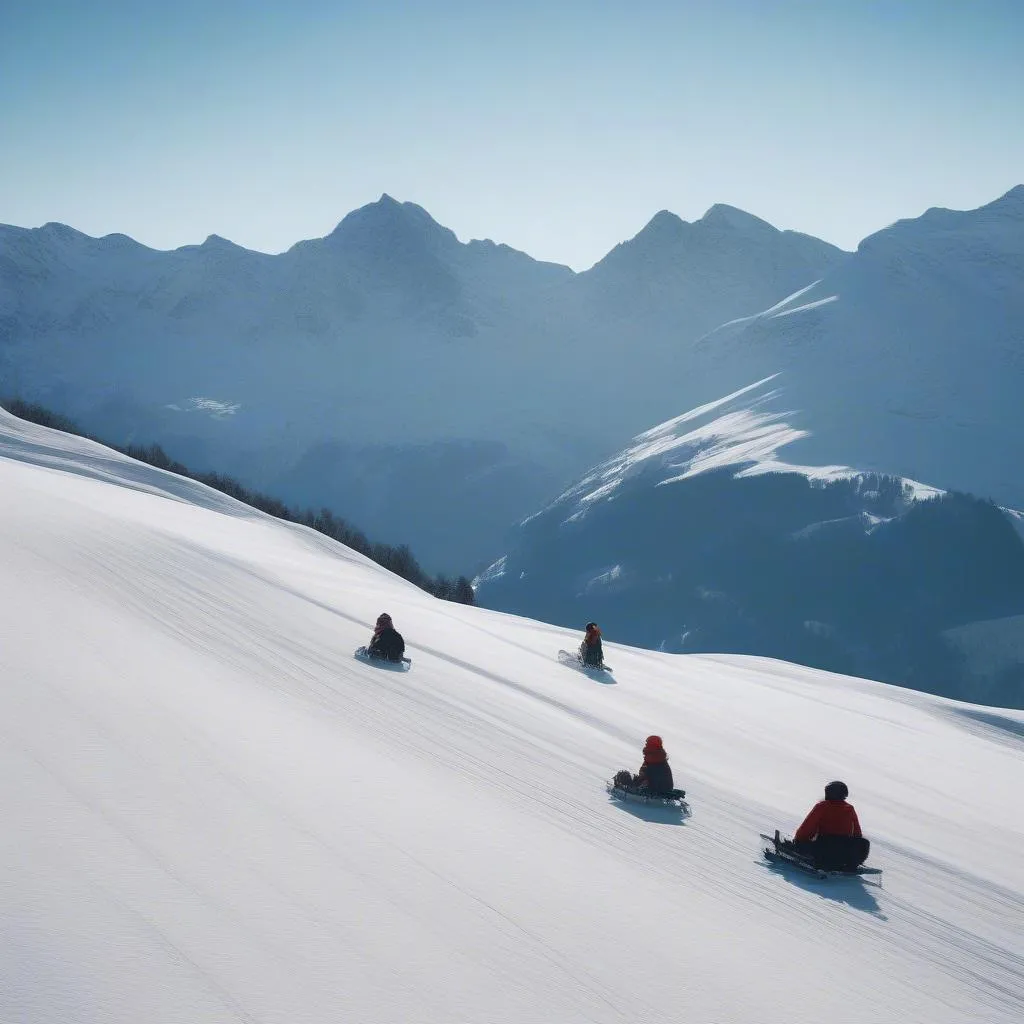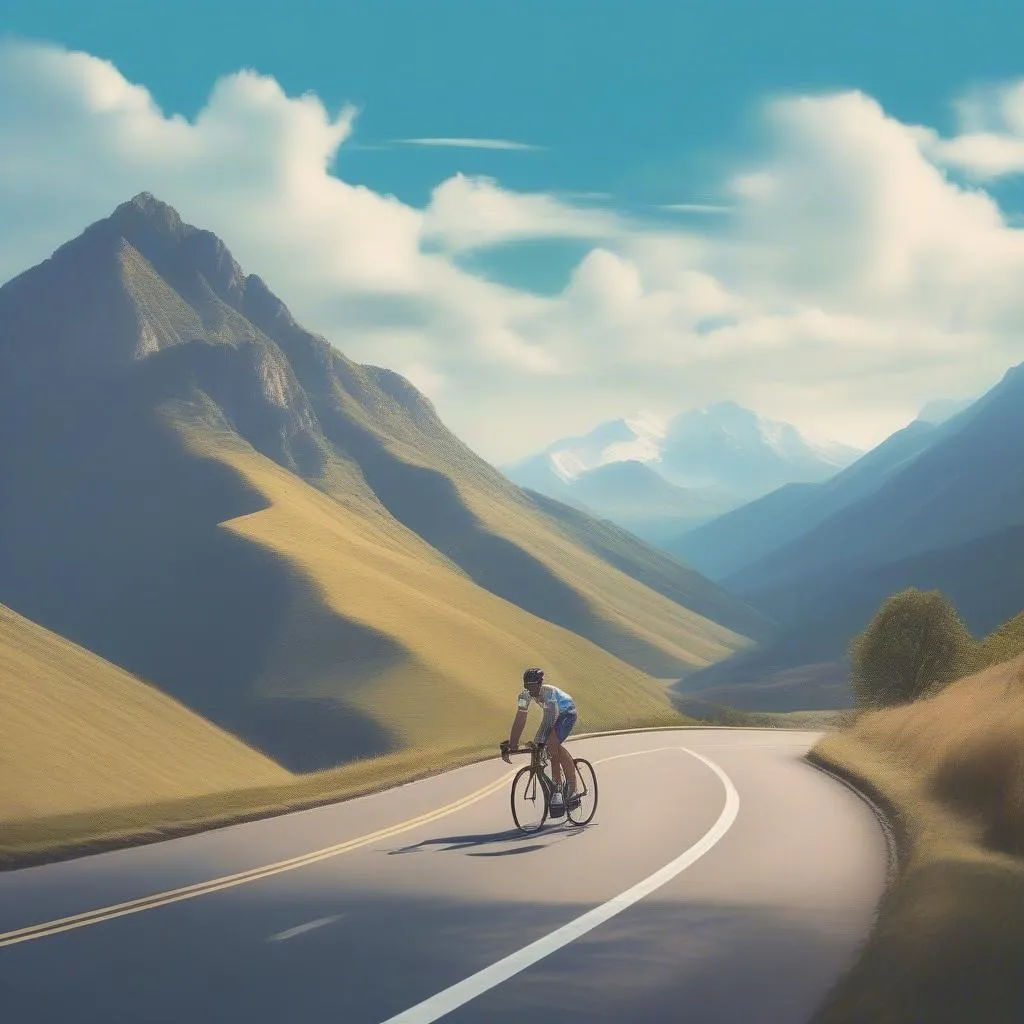Have you ever been sledding down a hill, feeling the wind whip past you as you gain speed? It’s exhilarating, isn’t it? But then you might notice something: the bigger kids on their sleds seem to be flying past you, effortlessly overtaking your descent. This begs the question: does a larger object really travel faster downhill? Let’s dive into the fascinating world of physics and find out!
Unpacking the Forces at Play: Gravity vs. Resistance
The concept of a larger object traveling faster downhill might seem intuitive at first glance, and there’s a reason for that. The force of gravity, which pulls objects towards the center of the earth, is stronger on objects with more mass. This means a larger object has a greater gravitational force acting on it.
However, there’s another force at play here: resistance. As an object moves downhill, it encounters resistance from various sources, primarily air resistance and friction. Air resistance is the force air exerts on a moving object, while friction occurs between the object and the surface it’s sliding on.
Here’s where things get interesting:
- Surface Area and Air Resistance: A larger object generally has a larger surface area, which means it encounters more air resistance. This increased air resistance can counteract the increased gravitational force, potentially slowing it down.
- Friction: The amount of friction depends on the types of surfaces in contact and is generally proportional to the object’s weight. While a larger object experiences more friction, its greater mass also means it’s less affected by it.
So, Does Size Really Matter?
The answer, as with many things in science, is: it depends!
In a vacuum, where there’s no air resistance, a larger object and a smaller object would indeed fall at the same rate, as famously demonstrated by Galileo’s Leaning Tower of Pisa experiment. However, in the real world, with air resistance and friction playing their part, the relationship between size and speed downhill becomes more complex.
If the slope is steep and the surface is smooth, allowing for minimal friction, the larger object’s increased gravitational pull might give it an edge, leading to a slightly faster descent. However, if air resistance is significant or the surface is rough, creating more friction, the smaller object might actually travel faster.
Exploring the Thrill of Downhill Adventures
Now that we understand the physics behind downhill motion, let’s explore some exhilarating activities where gravity takes center stage:
- Sledding in Switzerland: Imagine gliding down the snowy slopes of the Swiss Alps, the crisp mountain air rushing past you. The thrill of sledding is universal, whether you’re a child or an adult.
- Cycling the Hai Van Pass: For adventure-seekers, cycling down the Hai Van Pass in Vietnam offers breathtaking views and an adrenaline-pumping descent. The winding roads and varying slopes make for a truly exhilarating experience.
 Swiss Alps Sledding
Swiss Alps Sledding
Whether you’re planning a ski trip to the Rockies or a cycling adventure in the French Alps, remember these tips for a safe and enjoyable experience:
- Gear Up: Always wear appropriate safety gear, including helmets and protective padding, especially when engaging in activities with higher speeds.
- Choose Wisely: Select slopes or trails that match your skill level. Start with gentler slopes and gradually work your way up to more challenging ones.
- Respect the Environment: Be mindful of the environment and follow designated trails to minimize your impact on nature.
Frequently Asked Questions
Does the shape of an object affect its speed downhill?
Yes, the shape of an object can significantly influence its speed downhill. A more aerodynamic shape reduces air resistance, allowing for faster speeds.
What about rolling objects?
Rolling objects introduce another factor: rotational inertia. A larger, heavier object might have greater rotational inertia, making it harder to get rolling initially but potentially leading to greater speed once it picks up momentum.
Travelcar.edu.vn: Your Guide to Adventure
Looking for more travel inspiration and tips for your next adventure? Visit travelcar.edu.vn for a wealth of information on destinations, activities, and travel planning.
Remember, the joy of travel lies not just in reaching your destination but in embracing the journey and all the wonders it holds.
 Cycling Hai Van Pass Vietnam
Cycling Hai Van Pass Vietnam